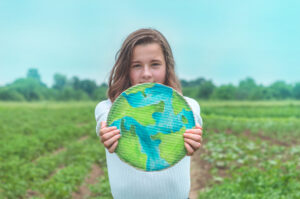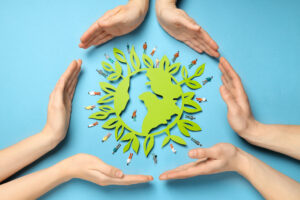Plastic pollution has emerged as one of the most significant environmental challenges of our time. From oceans to rivers, this ubiquitous material finds its way into the most remote corners of the planet, disrupting ecosystems and harming wildlife. It’s clear that tackling plastic pollution requires a multi-faceted approach, involving both reduction strategies and innovations in plastic alternatives. This is not only a problem of waste; it’s a problem of consumption, production, and disposal practices that have dominated for decades.
Reducing plastic usage is essential. Everyday items—straws, bags, bottles—often have viable, sustainable alternatives. While some single-use plastics are necessary for certain medical or sanitary uses, many can easily be replaced with reusable options that minimize waste. From reusable shopping bags to refillable water bottles, small changes in consumer habits can collectively make a significant impact. The key is increasing awareness and accessibility. For instance, cities across the globe are banning single-use plastic bags and straws, pushing both individuals and businesses to consider alternatives. These bans not only reduce waste but also shift societal norms toward sustainability.
At the same time, businesses are recognizing the role they play in this crisis. Corporations are now being held accountable for the environmental impact of their packaging. Many are moving toward zero-waste goals by eliminating unnecessary plastic, investing in sustainable packaging, and introducing more efficient recycling systems. Innovative companies are also exploring biodegradable plastics that break down naturally, reducing long-term environmental damage. For example, plant-based plastics are gaining traction as a more eco-friendly alternative, though their widespread adoption still faces hurdles in production costs and scalability.
Innovation in biodegradable and recyclable plastics is critical to addressing this issue. While the goal is to reduce reliance on plastic altogether, the reality is that plastic will continue to be a part of modern life for some time. Thus, designing plastic products with their environmental impact in mind is essential. Biodegradable plastics and recycled plastics offer a compromise—maintaining functionality while minimizing harm. However, these solutions must be paired with effective waste management infrastructure to ensure that biodegradable plastics decompose properly and that recyclable plastics are collected and processed efficiently. Without these systems in place, even the best materials can end up contributing to pollution.
Education and awareness campaigns play a vital role in shifting consumer behavior, encouraging people to make more sustainable choices in their daily lives. Schools and communities are working to educate citizens on how their consumption habits affect the planet. Initiatives like “plastic-free months” or educational workshops on waste reduction help individuals understand the broader impact of their choices. As more people become informed, they are more likely to adopt eco-friendly behaviors, such as opting for products made from recycled materials or avoiding plastic packaging when alternatives are available.
Governments are also stepping in with legislation to curb plastic pollution. Many countries are introducing stricter regulations on plastic production and waste management. These policies range from banning single-use plastics to implementing extended producer responsibility (EPR) laws, which require manufacturers to take back and recycle their products. Such measures hold companies accountable and encourage them to design products that are easier to recycle or that use fewer materials. The ripple effect of this is substantial—creating a marketplace where sustainability becomes a key factor in consumer choices and business operations alike.
The collective effort to reduce plastic consumption is a necessary step toward environmental preservation. By rethinking our relationship with plastic and making conscious choices, we can protect the planet from further harm and ensure a cleaner future for all. It is clear that the solution to plastic pollution will not come from any single action, but from a combination of innovation, policy, and individual responsibility. As consumers, businesses, and governments come together to address this crisis, we have the opportunity to create lasting change that benefits both the environment and future generations.






